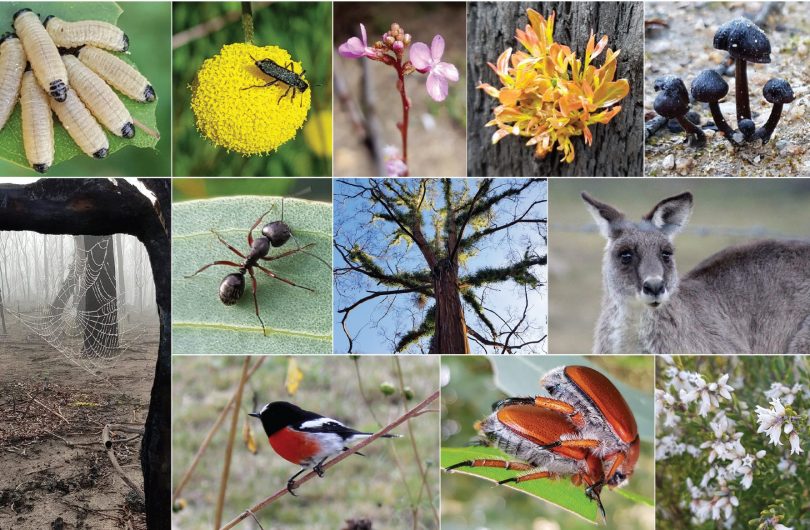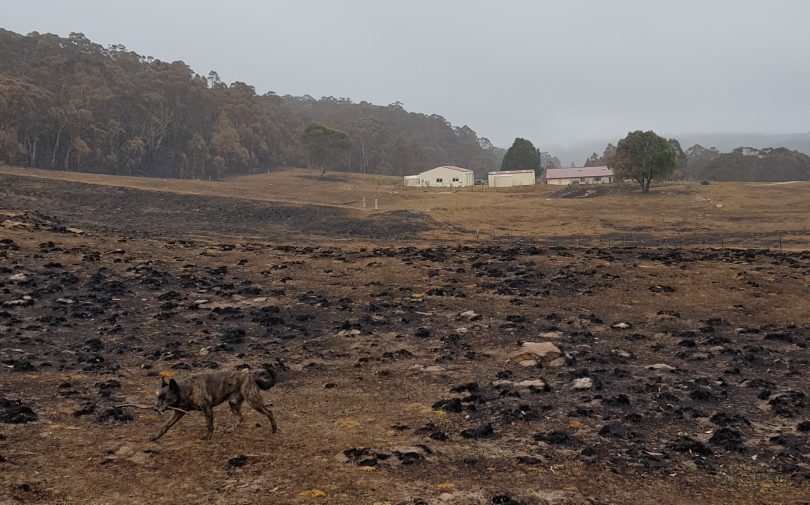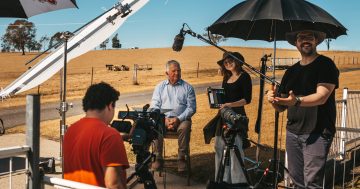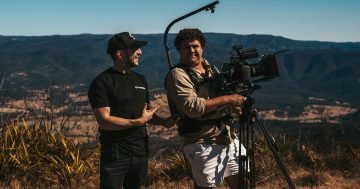
The cover of Paula Boer’s new photography book, Bushfire Recovery at Badja. Image: Supplied.
First Paula Boer lost her husband, then the bushfires came.
Almost two years later she has released a new photographic book, which is also a science book, a reference book and a personal story, that features more than 1300 photos she took as her 500-acre property Docsden as it recovered from the 2020 bushfires.
Bushfire Recovery at Badja: A Landowner’s Observations captures the citizen scientist’s observations on her property, from snuffling echidnas to mobs of kangaroos, tiny ladybirds to colourful butterflies, intricate orchids to towering eucalypts, with photos showing more than 400 species which are labelled with their common and scientific names.
Ms Boer said making the book taught her an “awful lot” about species, what is native and what is introduced as well as species she never knew she had on her property, which is between Cooma and Braidwood near Deua National Park.
“It also taught me how resilient nature is – that literally out of the ashes the phoenix rose,” she said.
“The property will never be back to what it was, but it is glorious.”
Her husband died the year before the fires, so she had to cope with the grief along with challenges brought by years of drought as well as looking after a property of that size alone.
She was overseas when the bushfires came and while house sitters saved her house and sheds, they messaged to say they could not find her horses.
Three days later she arrived back home, saying “nothing prepares you for the reality of driving to your gate and it’s not there anymore”.

Paula Boer’s property Docsden was devastated in the 2020 bushfires. Photo: Paula Boer.
The heavily-wooded property had been devastated, even the ground had burnt. Ms Boer went looking for the horses and found them dead from smoke asphyxiation. The fire was so hot “nothing survived”, she said.
In the aftermath, she and her dog continued their habit of early morning walks on the property, during which she began to see a pink fungus on the ground that was turning orange.
She researched this fungus, then began to see mushrooms and grass popping up as well, and started to take photos of the recovery process.
“Just for my own benefit really, to remember how bad it had been,” she said.
One day she was contacted by wildlife carers who asked if she could put out food for surviving animals and she agreed, also installing trail cams to see what was coming for a feed. She captured photos of burnt wombats and kangaroos with scars, “but they were alive”.
“The most noticeable thing was there were no youngsters, no joeys had survived,” she said.

Paula Boer, who has launched her new book Bushfire Recovery at Badja: A Landowner’s Observations. Photo: Supplied.
It was eventually suggested to her that she should put her work into a book and she decided to self-publish one.
“I thought originally I would do it for friends and neighbours so they would also have a record of what happened here, but it ended up being so much more than that,” Ms Boer said.
She has received “beautiful feedback” for her project from people who have told her it has given them hope.
She said her property has been turned into a wildlife sanctuary so instead of fixing fences they were now taking them down.
“It’s given me a future, it’s given me a purpose, looking after the wildlife and caring for the property,” she said.
“While before the fires I was in a state of overwhelm, I have now found confidence in looking after the property.”
Bushfire Recovery at Badja: A Landowner’s Observations can be ordered on Ms Boer’s website.
Original Article published by Albert McKnight on About Regional.














